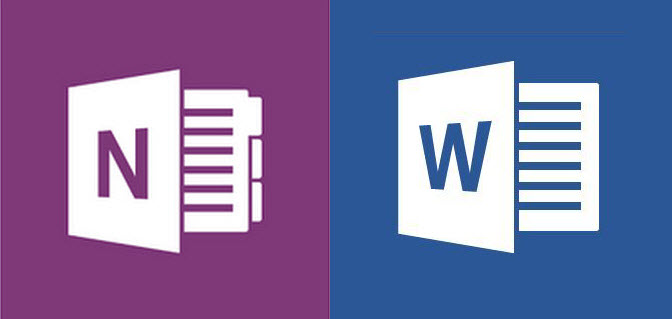
I received an email from a OneNote 2016 user (and lover) yesterday that who reads this blog, and had to get something off their chest about OneNote. They had a functionality request – and wanted to see if anyone else felt the same. While reviewing my email one last time before hitting send, I realized that our exchange had could be of interest to others so I will share part of our email conversation here:
Their request :
“It would be AWESOME if I could have a Tab that would just act as a Word Document with all of the exact same functionality as Word. No limitations. … I have had this feeling all along from the beginning of using OneNote that if I could just use a tab as a Word Document, the world would be a better place. Could you or any of your blog roll put out an opinion on this. I’d be interested in your opinions.” – K.M.
My response (sent close to midnight):
At the end of the day, literally and figuratively, OneNote was designed to be a digital whiteboard and a blank canvas upon which Microsoft expects us to record our thoughts, scribble our notes, and type out the rough starts to budding ideas that will all evolve and transform over time until they reach a point where they must transcend the medium to be able to convey the message as intended. At that time they expect us to export the page into an Email, an Word Document, a PDF, or even an Excel File, and to then store that file in OneDrive or SharePoint. The fact that we have the ability to do so is awesome.
Perhaps what we really want is not for OneNote to be more like Word, but for Word to be more like OneNote. The arrangement of Pages within Section Tabs within Notebooks is so easily consumable due to its logical elegance and arrangement. I can envision a world where OneNote, Word, and SharePoint melt together to give us the best of all three programs rolled into one – an online interface that allows us to compose, edit, organize, share, and consume information all from one simple, intuitive user experience.
I speculate that OneNote will never gain 100% of the functionality of Word. The main reason why I take this position is that Word was designed for producing documents that can be printed onto paper. OneNote is the digital canvas, eliminating the need for paper. When you start to set the rigid constraints of the print publishing world onto a program that is designed for flexibility, we lose the potential, and the freedom that OneNote allows, for creative expression.
You said that “Word is so precise and OneNote seems so limiting..” – I think what the OneNote team is trying to do is to clear away all the rules and hours of training required to use a precise, full-featured tool such as Word to allow users to jump in and get to it! It’s frustrating for those of us that enjoy OneNote so much that we want to spend our entire day within it, instead of bouncing back and forth between programs. However, there are just my own thoughts, and I have been wrong before, and hopefully, I’ll be wrong again. 😀
One thing we have to recognize is that with Windows 10, OneNote is starting back at square one. The team is rebuilding OneNote on a new, stronger, more reliable, and responsive platform. Although we may experience growing pains during this transition while we wait for the OneNote App and OneNote Online to catch up with OneNote 2016 in the robust-ness of features and functionality.
Despite our criticisms, we are so lucky that Microsoft is creating space for change within their software, and like we discussed, that changes are not based on the whims of pundits or those with more influence. OneNote MVPs, like myself, are here to act as champions, enthusiasts, and mentors, but we are really conduits for the majority of users to funnel your feedback to the OneNote Product Team. It’s not about who submits the feature, but about how many rally behind the feature to up-vote the request in the OneNote User Voice Forum. Microsoft is listening to our requests and analysing the features we use through our clicks to tune this tool into the best version of itself.
So please get involved in the User Voice. Search to see if others have submitted requests for Table Formatting, Alignments, and other features that matter to you, and vote them up. And if they are not listed, submit them and rally your community to increase the clout of your request with your votes. We can all work together and through our activism to shape the future of the product we all love, together.
*
Thank you to K.M. (who will remain anonymous until I have permission to use their name) for being the inspiration for this blog post, and for started shifting the gears in my head on the subject!
